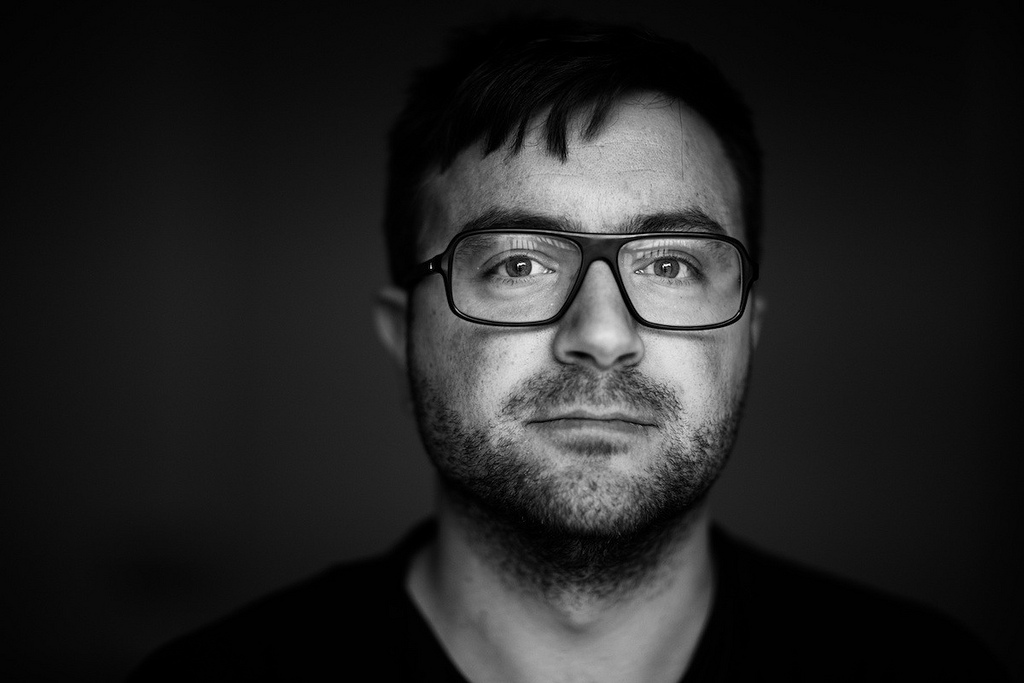Most productivity literature is about tips for organizing our workspace — creative ways to arrange our e-mail inbox, write to-do lists, color-code our folders, and so on. These can be useful, but they leave a big question unanswered: how can we find the focus and motivation to put these tricks into practice? In other words, how do we stop putting off getting organized?
In my experience working with clients looking for efficiency and enjoyment in their work, what I’ve found is that, to really get what we want out of what we do, the first step is to take a close look at what we’re avoiding.
Your Pre-Procrastination Experience
What do I mean by this? You’ll see for yourself, I think, if you carefully watch what’s happening when you’re about to put off a task you’re doing. You’ll notice that, in that “clutch” moment right before you choose to procrastinate, you start having some thought or sensation — some inner experience — that feels uncomfortable for you.
The kind of thought or sensation I’m talking about is different for each person. For some people, it’s a tension somewhere in their body — maybe a tightness in their neck or shoulders. For others, it’s a painful memory or worry about the future — perhaps a fear that the boss will criticize their project. Maybe, for you, it’s something completely different.
Although the difficult inner experience I’m talking about is unique for each person, the way people tend to deal with that experience is pretty much the same. Because it’s scary and uncomfortable, we distract ourselves from it — by playing FreeCell, surfing the Web, or something else. In other words, we procrastinate to avoid thoughts or sensations we’d rather not have.
Of course, the trouble with this approach is that, when we distract ourselves, we take our attention away from our work. We can’t code that computer program, paint that painting, or do anything else that’s productive when we’re messing around on social media.
How To Allow
What I’ve found is that there’s a better way to relate to this inner experience I’m talking about: to fully allow it. When you feel that tension, painful memory, or whatever it is coming up, hold your attention on your work, keep breathing, relax your body, and allow that experience to pass away on its own.
If the tension in some part of your body gets intense, you can try “breathing into” that tight spot. This is a term often used in yoga, and it simply means breathing so the tight area — whether it’s your throat, chest, or somewhere else — rises and falls with the movement of the breath. This can help you let go of the tension.
What I think you’ll notice, as you practice allowing that thought or sensation to be without resisting it, is that it will pass away fairly quickly — perhaps within a few seconds or minutes. And when it dissipates, you can gently return your attention to your work, and keep moving forward.
The more you practice doing this, the more comfortable and familiar that experience will become. You’ll start to realize it isn’t as scary and dangerous as you’d thought. More importantly, you’ll become able to persist in your task, even in the face of that pesky inner experience. Your old habit of automatically fleeing from the experience will start fading away.
Mastering this “art of allowing,” I think, will radically shift the way you experience your work. You’ll begin to feel a sense of ease and “flow,” and maybe even some joy, in your daily routine.
Photo by *Zara





Productivity in the workplace can be hindered but also heightened depending on the usage of the application. Companies choose to block or not block social media apps. Unfortunately they are missing out on that grey area where social media apps can be utilized to further inovation and productivity. Palo Alto Networks came out with this whitepaper talking about how to block social media apps and when it is appropriate to let employees utilize these apps productivly. To block or not? Check it out: http://bit.ly/d2NZRp
Hi Chis,
Your advice is so spot on and not only will it effect our work but every area of our lives. And the more we allow and breathe…the more we’ll be in the flow. I know this because I’ve read your awesome book!
Hi Tess — I think that’s a great observation — that learning to allow the uncomfortable thoughts and sensations that come up for us, rather than resisting them, can benefit us in areas of our lives outside of our work.
Great post, Chris. I love the concept of just kind of sitting with your discomfort and experiencing (and owning it). Something I do myself and with my coaching clients is to add a couple of questions to the pre-procrastination experience: “What are you telling yourself about this?” and then “What’s the truth?” What comes up for me are things like “If I start I’ll have to finish it all today” (and, of course the truth is I don’t have to) or “Its hard.” (which may be the truth but that provides an opportunity to explore “hard” and who I want to be when things are hard).
I will definitely check out your book!
Melinda
Hi Melinda — I think “who I want to be when things are hard” is a great way of putting it. A task might appear hard, in the sense that you get some kind of unpleasant sensation when you contemplate doing it — perhaps a sense of heaviness in your stomach, or something else. But it sounds like you see that you can also decide what to do when you’re feeling that sensation — that it doesn’t deprive you of your power to choose to move forward with the task.
I have never thought of it this way, but you’re absolutely right, I actually get an uncomfortable feeling in my stomach when I’m about to start something I really don’t want to do. I experienced it just this morning! I can’t believe I’ve never worked that out. I’ll be looking for that in future, and I think a couple of deep breaths might be the answer.
Topi
Hi Topi — that sounds like powerful awareness, to identify the sensation that comes up right before you start a project — and that you may have been in the habit of running away from before. I think that’s a great idea, as well — to breathe gently into your stomach when you feel that coming up, and see if that helps you feel more capable of moving forward in your work.
Hi Chris .. I like the idea of breathing the tension away .. it’s facing the fear and in fact if we do the job, then it’s usually much easier than we thought, and often done quicker .. also it doesn’t hang over us for the day, or for the days ahead – while we haven’t done it! The cloud of relief in achieving that task is palpable ..
Accepting we need to do it – releases the tension too .. I’ve had a few of these in the last few months, when I finally get to do them .. the pressure valve is taken off ..
Thanks – Hilary
Hi Hilary — I like that way of putting it — experiencing the tension or queasiness that’s there is a difficult step, but it actually takes less time and energy than doing all sorts of things to block it out of our awareness.
yes i agree,
i believe people choose intentionally to procrastinate
thanks for making that clear :)
Hi Farouk — yes, on some level I think we’re choosing to avoid unwanted sensations when we put off our work — and, many people have been in the habit of escaping from those sensations for so long that they’re no longer aware they’re doing it. Just becoming aware that we’re in that habit, I think, can sometimes be enough to have us let go of it.
Procrastination is something we all deal with and just going with it and letting something happen is the best way to do it. Our minds are powerful and lead us to believe that we can do it later but we really know it should be done now.
Great post! :)
Hi Eric — I think “just letting it happen” is a useful way to put it — just allow whatever experience comes up during your work to be there, without calling it a problem or trying to make it different, and see whether that makes a difference in how easy your work becomes.
Dear Chris, this is really really good!! I can relate to it so much. You’ve explained it in such an understandable way, a way that makes it “do-able”. I rarely hedge from much of anything as long as I’ve consciously made up my mind that I want to do it, or that it NEEDS to be done AND that I am going to do. That conscious-choice part is very important for me. A bit like “shoot” or get off the pot.
BUT with that said, there are times like now in my life when I have so much thrown at me so fast, and all at once, that it can feel like it’s swirling around me. And then it all flows together in one big lumpy mess and I can hardly get a handle on it. BUT I do get a handle on it and pick the most important thing on the list and work my way through it, BUT :) once it has turned in that big lumpy mess, even though I’ve broken it down I am still left with a hedging feeling.
SO, lately I have to do EXACTLY what you describe here, which is just let the “retracting” feeling in my “be” there, honor it’s existence, and then mechanically take the first step in what I need to do. Once I do this, the “retracting” feeling goes away, and I start to flow, get clear and productive.
I think I’ve been instinctively doing what you describe here, but seeing it written clearly out like this allows me to be even MORE conscious of it now. I like the idea of breathing into it, letting it be there, breathe and let it pass through me. THAT is BEAUTIFUL!! And I know for a fact that it really works. It’s GREAT advice that you’ve share, which can also be used for any facet of our lives. I think I’ve used it most with doing dishes! LOL!! :)
Thank you Chris sooo much.
Hugs,
Robin
Hi Robin — that sounds like useful awareness — that what really seems problematic about your work is the “hedging” or “retracting” feeling, and not necessarily the content of what you’re doing. I’m curious about what the hedging feeling is like — where it is located in the body, and what qualities it has (tightness, heat, nausea, etc.). It sounds to me like you are also practicing getting more familiar with that hedging feeling by allowing it to be, rather than saying “oh, time to fold the laundry” like a lot of us do.